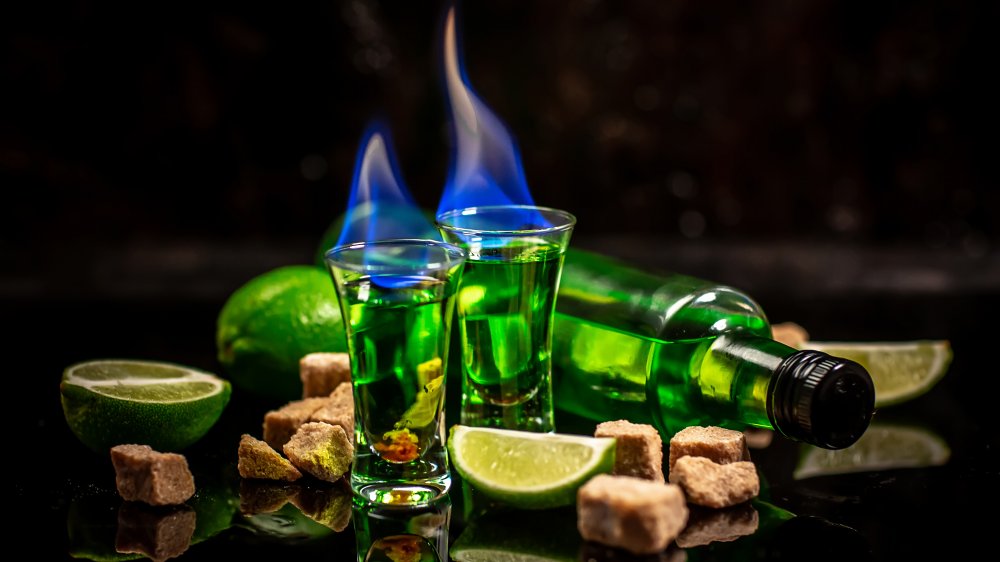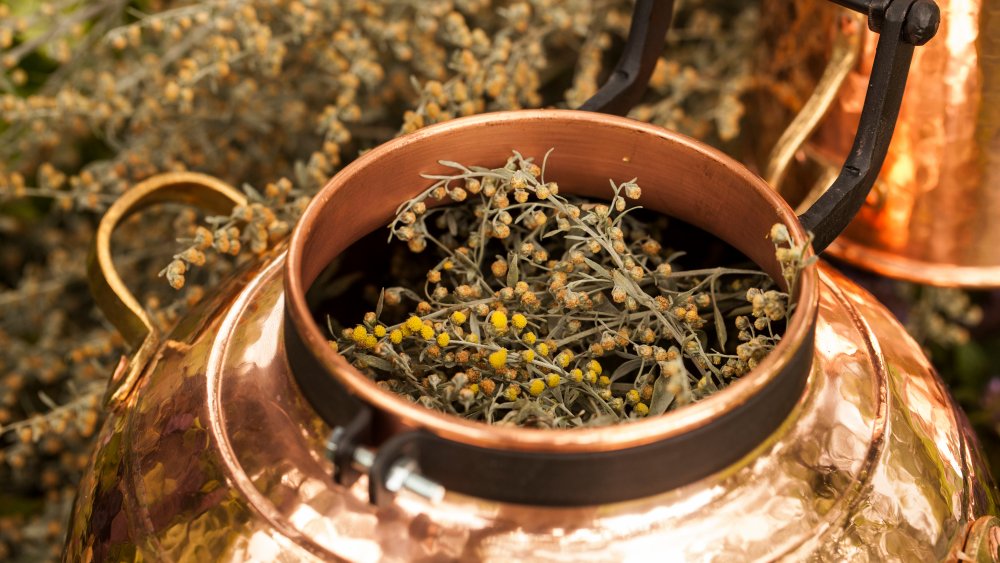The Real Reason Absinthe Is So Expensive
Absinthe has always carried a mystique that is part romantic, part hair-raising — and, of course, neither side tells the full story.
In ancient times, a key component of absinthe, wormwood leaves (Artemisia absinthium), were used in Greek medicines, but after the alcoholic version of absinthe hit France in the 1840s, trouble brewed in the form of madness, murder, and addiction, leading European countries and America to ban the controversial substance in the 1900s and 1910s (via Science History Institute).
While false myths about "The Green Fairy" persist — most commonly, as Liquor.com notes, that it's hallucinogenic — the United States re-legalized absinthe in 2007, as long as the levels of thujone (present in wormwood) are kept under 10 parts per million in each bottle (via Distillery Trail).
Since that resurgence, mixologists have embraced the high-alcohol, licorice-tinged ingredient in cocktails like coladas, punches, and swizzles. But for those who want to craft their own absinthe drips at home, quality bottles come at a price.
Absinthe production and ingredients
According to Alandia, "real" absinthe costs about $45 per bottle, while macerated versions can be found for roughly $35. The company explains that the maceration-only method is "less cost-intensive," while distilled varieties are "softer and easier to drink."
In general, manufacturers create higher-quality absinthe through a lengthy process that starts with herbs and botanicals infused in neutral-tasting spirits for 12 to 24 hours, followed by distillation and a second infusion that lends absinthe its trademark green color and boosts flavor and aroma (via The Wormwood Society). At this stage, makers add more herbs, followed by proofing and possibly aging in oak barrels or steel tanks for up to one year to promote oxygenation.
Aside from the potentially lengthy process, raw materials also likely factor into absinthe's higher costs. Difford's Guide notes that its "holy trinity" of herbs is grande wormwood, green anise, and Florence fennel, while additional ingredients usually include petite wormwood, hyssop, and lemon balm. While some of these herbs are fairly common and easy to grow, Florence fennel seeds "are hard to find and are very expensive," and petite wormwood is most suited to only particular climates, like those found in the Mediterranean (via Absinthe Buyers Guide).
With its potentially polarizing anise flavor, soaring ABV, and top-shelf prices, perhaps absinthe will always remain somewhat of a niche tipple. But its sometimes-sordid backstory throughout history solidifies its status as a living liquor legend.

